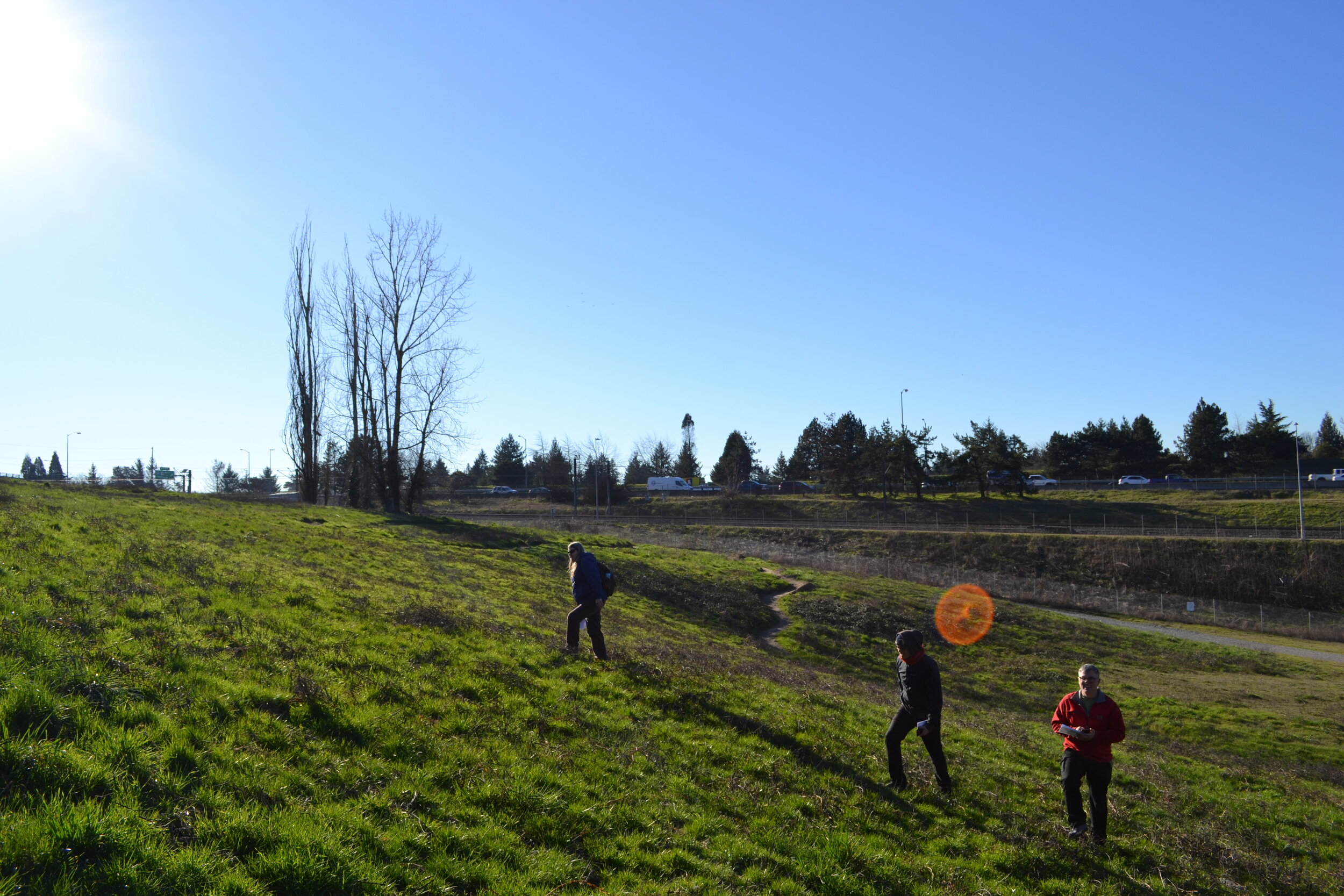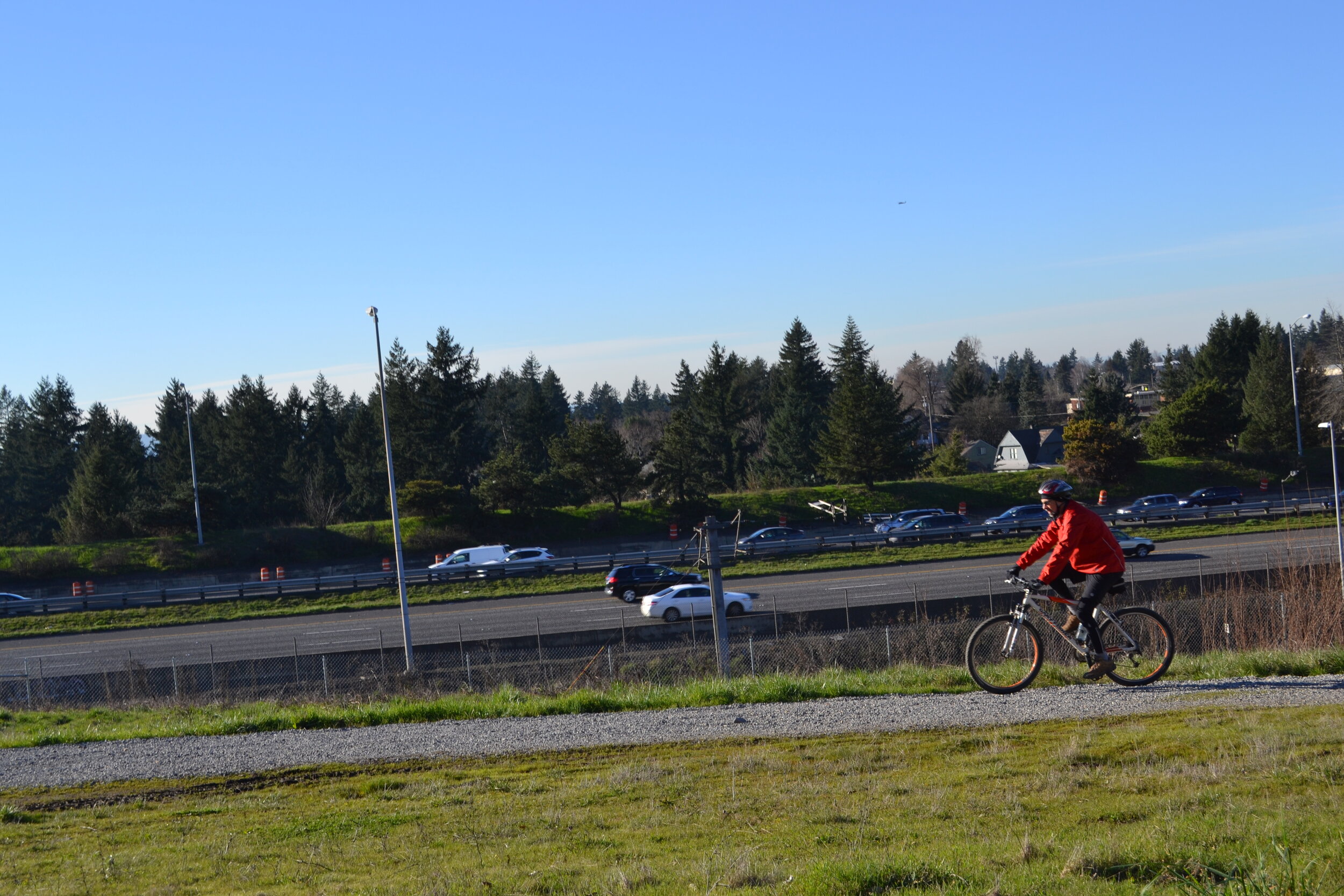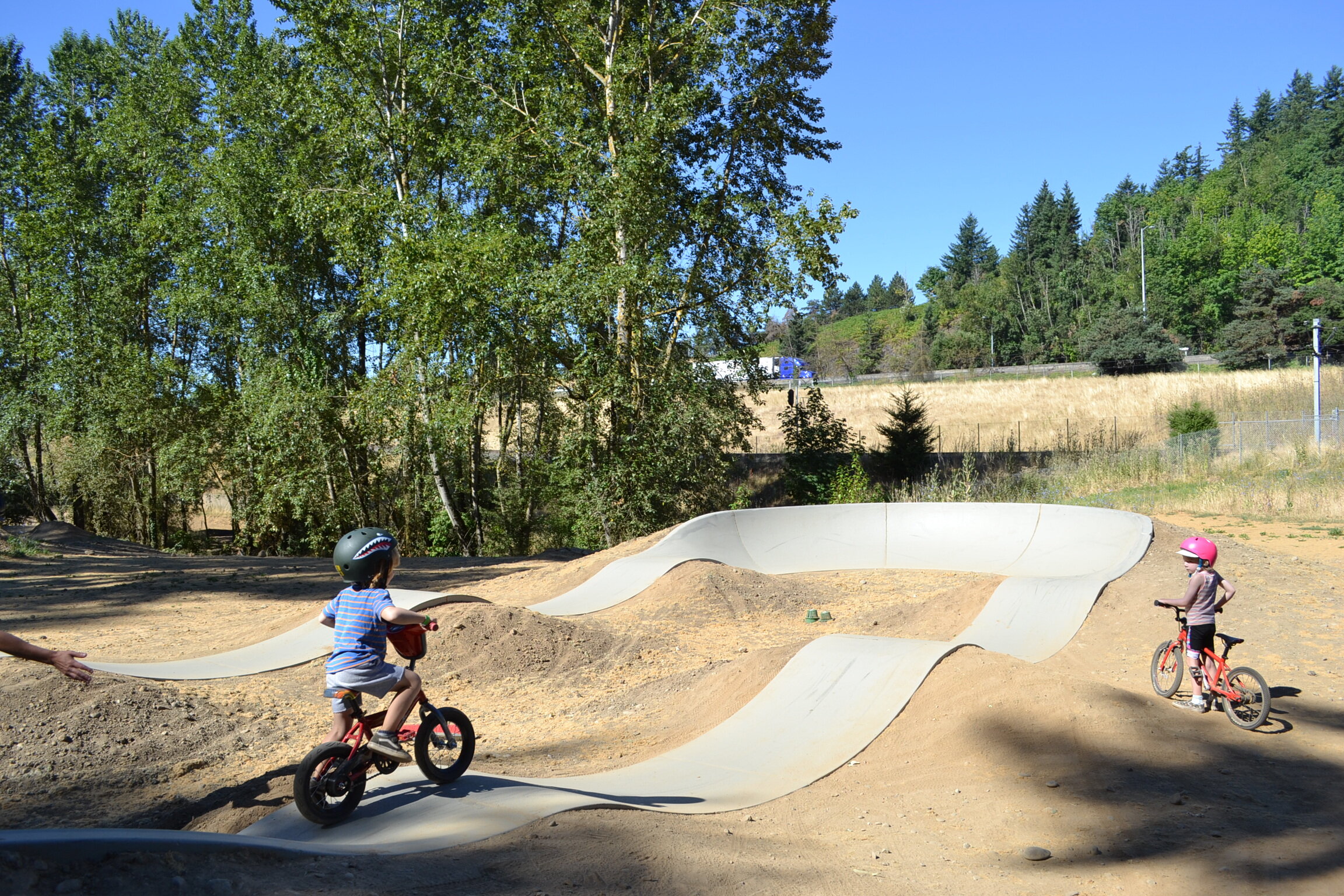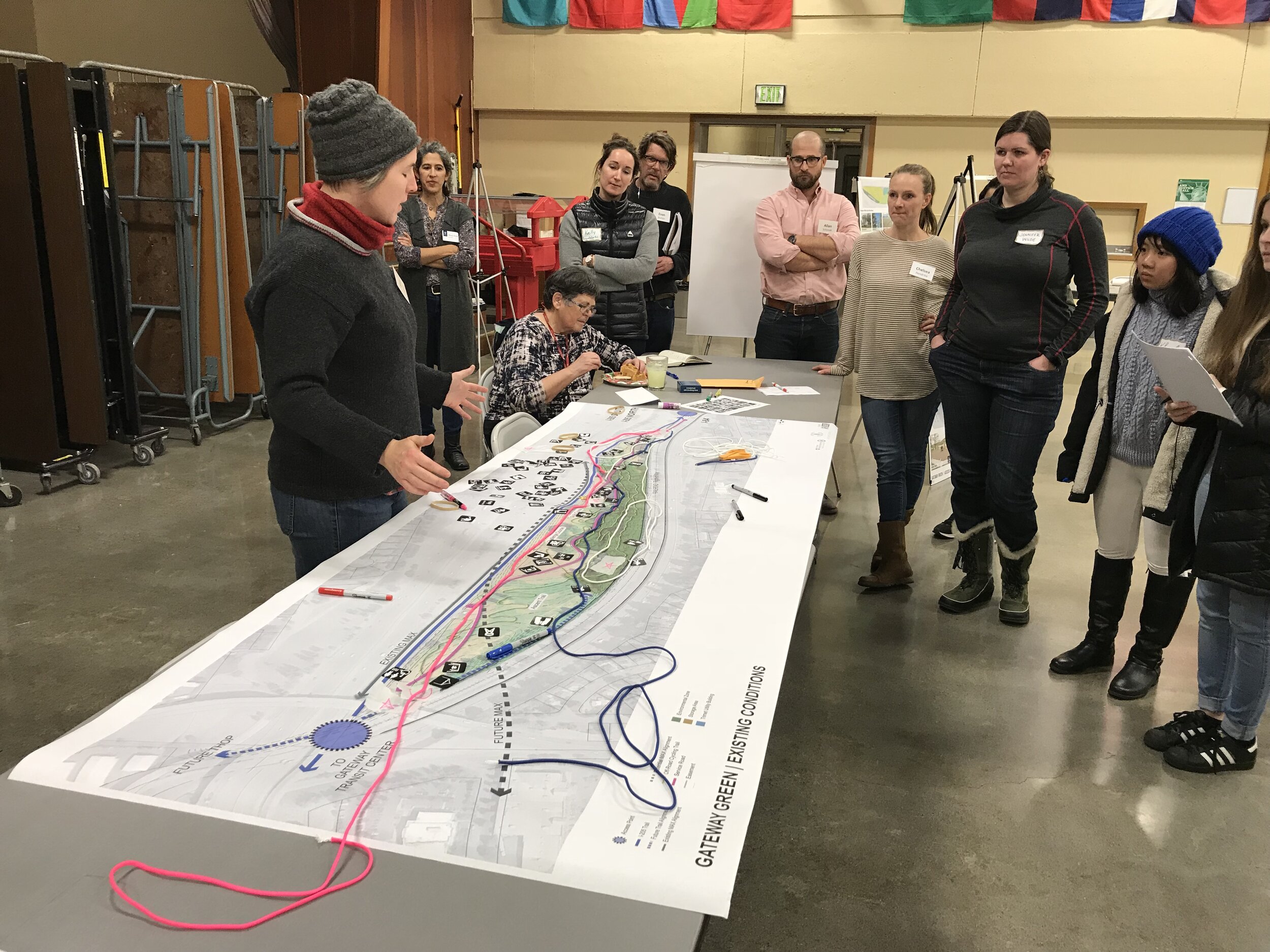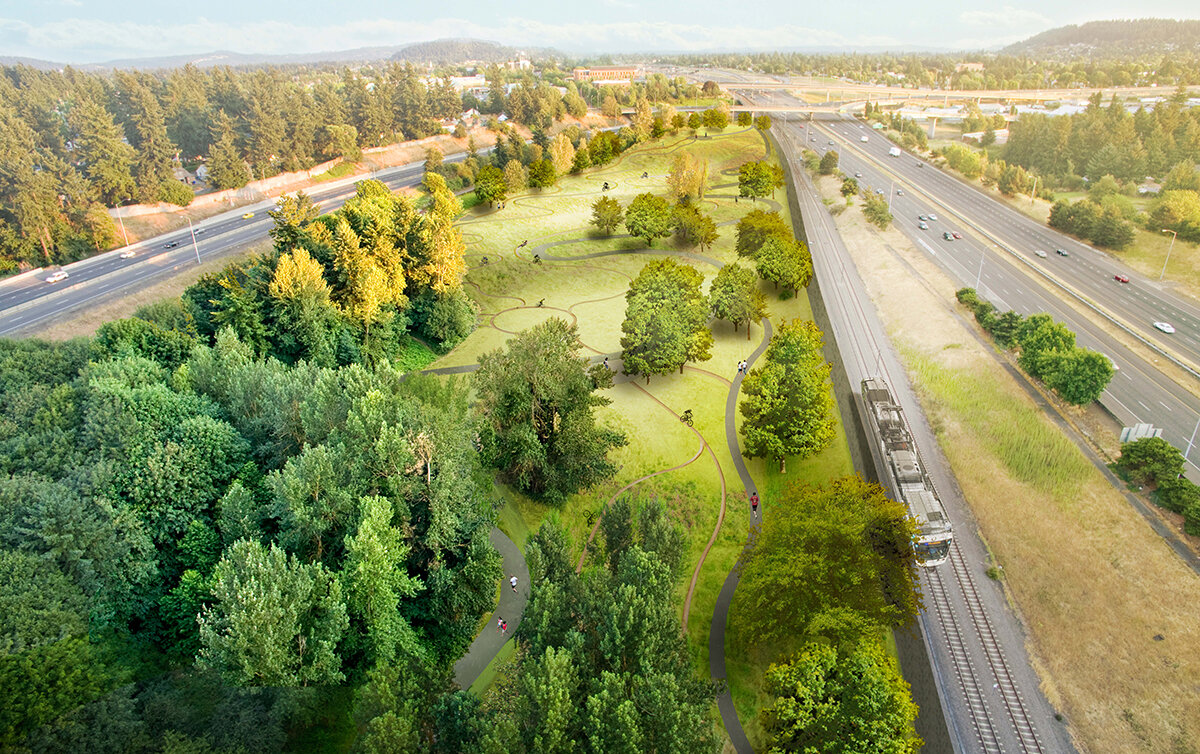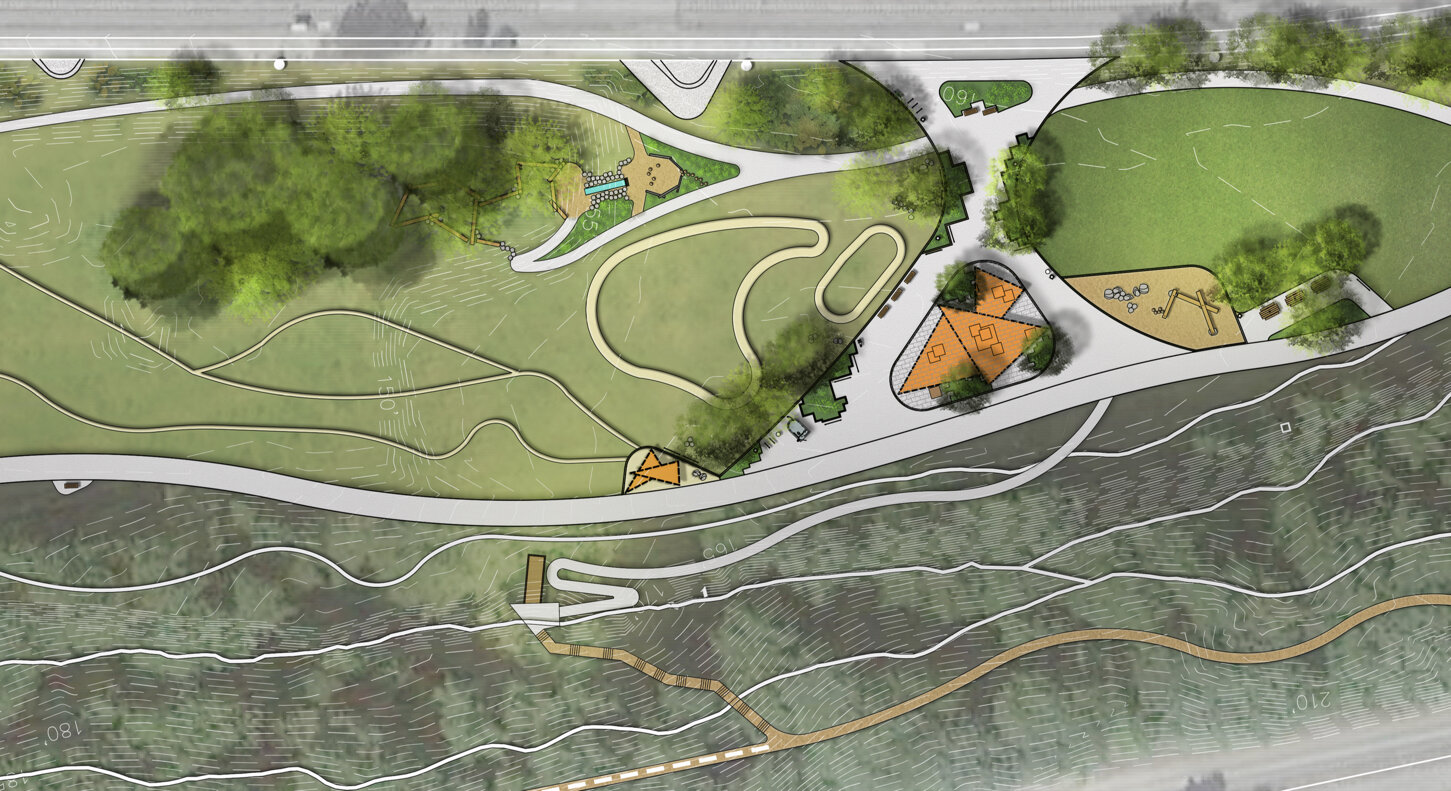Portland City Council Approves the next Construction Phase of Gateway Green
/Kelly Stoecklein at Gateway Green, in Northeast Portland
On Wednesday, September 11th, Portland City Council gave the Gateway Green project permission to bid for a construction contract. This is routine business at the City, but to the project team and park supporters, it’s thrilling. It means the many years of advocacy, public engagement, and design work will take one more step towards becoming a reality.
Gateway Green is a 25-acre site located at the confluence of two major freeways in East Portland, a historically park-deficient area of the Portland Metro Area. Since 2012 GreenWorks has been involved in the project and most recently produced a master plan to guide future work centered around restoring habitat, improving access, and enhancing recreational opportunities, specifically off-road cycling. We asked landscape designer Kelly Stoecklein, who has been spending a lot of time on the project over the past two years, about the significance of last week’s events.
Portland City Commissioner Nick Fish signing plans for Gateway Green, alongside project champion Linda Robinson
GW: So what’s Gateway Green all about?
KS: Gateway Green has been in the works for a very long time, well before my involvement. What’s now known as Gateway Green used to be the site of the Rocky Butte Jail in the mid-1900’s, then a landfill of sorts from the construction of I-205 and demo of the prison in the 1980’s. In the early 2000’s Ted Gilbert and Linda Robinson, Gateway neighborhood citizens, along with other visionaries, approached the then owner of Gateway Green at the time, ODOT, to discuss alternative futures of the property. A series of events brought Gateway Green into the hands of Portland Parks & Recreation. With the combined efforts of Friends of Gateway Green (FOGG), the cycling community and Portland Parks & Recreation, an initial phase of the bike park construction, known as “Dirt Lab,” was completed shortly after the land was purchased.
The vision for Gateway Green came out of a larger vision for the Gateway community and the primary drivers from the beginning were Ted Gilbert and Linda Robinson. Ted and Linda created Friends of Gateway Green, a 501c(3) organization, whose mission was, and remains, to bring the surrounding community opportunity for recreation and an experience with nature. Historically, North Portland has lacked accessible greenspace when compared to other parts of Portland. It has also been challenging for the off-road cycling community to find their space in the Portland Metro Area. Gateway Green serves as a solution for both of these challenges.
GW: So what happened recently that has park supporters excited?
KS: So, the City Council approved Portland Parks & Recreation’s plan to go to bid and spend $3.7 million to construct the next phase of the project. This means the city will release a request for bids, asking contractors to submit proposals for the contract to build the next phase.
One of the things they’ll be constructing is Gateway Green’s central pathway, what we call “the spine.” It serves as central circulation and will be ADA compliant.
The park at the confluence of two freeways, A Gateway Green Conceptual Design
“As urban areas increase in density, what do you do with these left-over parcels? What do you do with these parcels that are supposedly derelict wastelands, taken over by blackberry brambles?”
We're creating this ideal gem of open space in the middle of two highways. We went through an intensive public engagement process last year where the community told us what they wanted to see in this park. Based on the community feedback, feedback from project partners and Portland, Parks & Recreation, a master plan was created. This next construction phase will serve as an armature for all future work to come. The central spine, habitat restoration planting, and the Hub area (including a flexible lawn space, nature play, a drinking fountain and a restroom) will be the foundation of phases to come.
Figuring out how to get water to the site has been a real challenge and the city will be digging a well, actually. This new infrastructure will be a luxury not only for Gateway Green users but also users of the I-205 multi-use path. Currently, there is a lack of facilities along the trail corridor and it will remove a barrier for people that need increased access to restrooms and clean drinking water – like kids and older folks!
GreenWorks staff and project partners surveying a trail alignment at Gateway Green
To see the city behind it, to see the commissioners all behind it, to see the mayor behind it, means the idea has reached a new level. It has been incredible to see all of the players come together around this one dynamic community-centered project. Gateway Green has brought together so many local agencies and organizations like Metro, The City of Portland, Trimet, ODOT, Friends of Gateway Green, NW Trail Alliance, the International Mountain Bicycling Association and the local community. That’s stunning.
GW: Why is a project like Gateway Green so important to the surrounding community?
KS: This project serves as a precedent. The question it’s trying to address is: As urban areas increase in density, what do you do with these left-over parcels? What do you do with these parcels that are supposedly derelict wastelands, taken over by blackberry brambles? There's more opportunity for these spaces if people think creatively and come together as a community, which Gateway Green has done.
GW: So we’re now moving into a construction phase of the project, what are you most excited to see come to life?
KS: I’m excited to see how Gateway Green will bring community members together around an activity, biking namely, which will increase people’s health and sense of connection to others. I’m also excited about the project’s commitment to enhancing habitat.
I’m happy knowing there will be a space for kids to get outside and explore, ride bikes, go climb a tree or find some frogs, see what nature is all about, and make some friends. Gateway Green is creating an accessible venue where people can connect with nature and to recreation in a way that is not common enough within our growing cities.
The second part, the habitat part, is about creating another ‘habitat patch’ in the city. We asked, “What critters are out here and how can our planting approach support them?” That was fun to think about and piece together. In this park there are a lot of birds, rodents, insects and a number of pollinators. Gateway Green will serve as another patch contributing to the city’s network of habitat patches and corridors.
Gateway Green is located in the Madison South neighborhood of Portland. Cyclists and pedestrians can access it via the I-205 Multi-Use Pathway between Gateway Transit Center and Maywood Park. The park is open from 7 AM to 10 PM daily.







